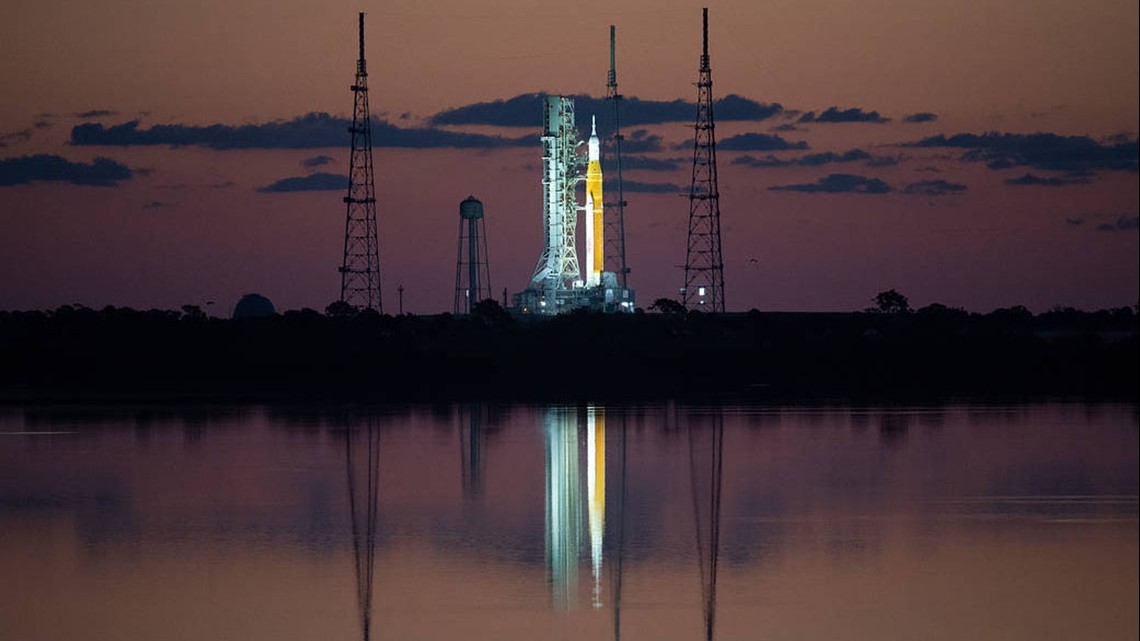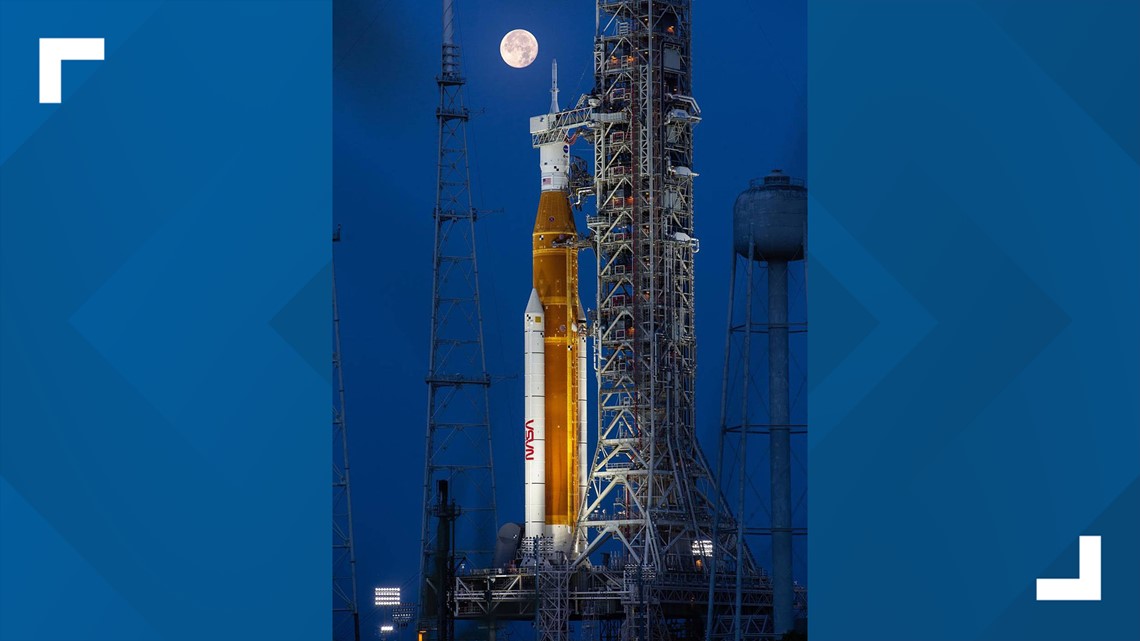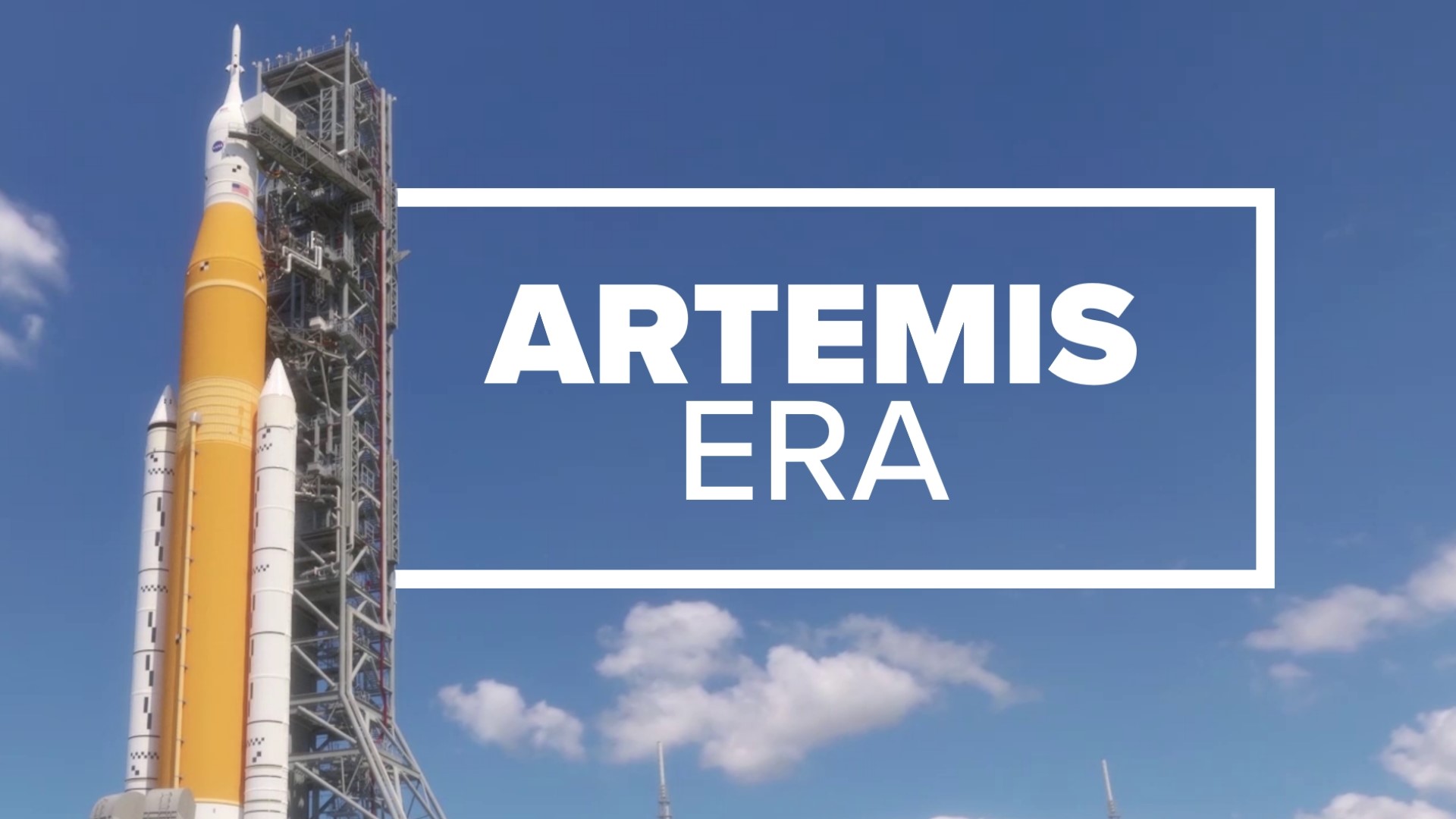HOUSTON — NASA called off the launch of its mighty new moon rocket on its debut flight with three test dummies aboard Monday after a last-minute cascade of problems culminating in unexplained engine trouble.
The next Artemis 1 launch attempt will not take place until Friday at the earliest and could be off until mid-September or later.
As precious minutes ticked away Monday morning, NASA repeatedly stopped and started the fueling of the Space Launch System rocket because of a leak of highly explosive hydrogen, eventually succeeding in reducing the seepage to acceptable levels. The leak happened in the same place that saw seepage during a dress rehearsal in the spring.
The fueling already was running nearly an hour late because of thunderstorms off Florida’s Kennedy Space Center.
Then, NASA ran into new trouble when it was unable to properly chill one of the rocket's four main engines, officials said. Engineers continued working to pinpoint the source of the problem after the launch postponement was announced.
“This is a very complicated machine, a very complicated system, and all those things have to work, and you don’t want to light the candle until it’s ready to go," said NASA Administrator Bill Nelson.
Referring to launch delays, he said: “It’s just part of the space business and it’s part of, particularly, a test flight.”
To the moon and beyond
The mission, when it happens, will be the first flight in NASA's Artemis project, a quest to put astronauts back on the moon for the first time since the Apollo program ended 50 years ago.
NASA said the Artemis 1 mission will provide a foundation for human deep space exploration.
It's a critical test drive, of sorts, to check out the Orion spacecraft in a spaceflight environment and how it performs on its re-entry, splashdown and recovery. NASA said a successful mission will demonstrate its capability to "extend human existence to the moon and beyond."
By "beyond," they mean Mars.
"When we think about Artemis, we focus a lot on the moon," said chief astronaut Reid Wiseman. "But I just want everybody in this room and everybody watching to remember our sights are not set on the Moon. Our sights are set clearly on Mars."
RELATED: Artemis update: Moon rocket on track for Monday launch despite launch pad lightning strikes
Artemis 1 mission details
- Mission duration: 42 days, 3 hours, 20 minutes
- Total distance traveled: 1.3 million miles
- Re-entry speed: 24,500 mph (Mach 32)
- Splashdown: Oct. 10, 2022
The Orion is "most powerful rocket in the world and will fly farther than any spacecraft built for humans has ever flown," according to NASA. The SLS rocket will produce 8.8 million pounds of thrust during liftoff as it launches the nearly six-million-pounds Orion to orbit.
"Our teams have been working extremely hard for a very, very long time to get to this point and this is very special and we’re extremely excited,” said Artemis I flight director Rick LaBrode.
Unlike the Apollo missions to the moon in the late 60s and 70s, Orion will travel thousands of miles beyond the moon during the four to six-week mission.
“This is a mission that truly will do what hasn’t been done and learn what isn’t known,” said Mike Sarafin, Artemis I mission manager at NASA Headquarters in Washington. “It will blaze a trail that people will follow on the next Orion flight, pushing the edges of the envelope to prepare for that mission.”


To the moon and back
As Orion continues on its path from Earth orbit to the moon, it will be propelled by a service module provided by the European Space Agency. On future missions, the module will provide housing, air and water for astronauts.
To talk with mission control in Houston, Orion will communicate through the Deep Space Network.
The outbound trip to the moon will take several days. During this period, it will collect data and allow mission controllers to assess its performance.


After four to six weeks and a total distance traveled exceeding 1.3 million miles, the mission will end with a test of Orion’s capability to return safely to the Earth.
The spacecraft will splash down off the coast of Baja, California. Divers from the U.S. Navy and operations teams from NASA will approach in small boats from a recovery ship. The divers will inspect the spacecraft for hazards and hook up tow lines, and then engineers will tow the capsule into the recovery ship for its journey home.
Rocket power
The new rocket is shorter and slimmer than the Saturn V rockets that hurled 24 Apollo astronauts to the moon a half-century ago. But it’s mightier, packing 8.8 million pounds (4 million kilograms) of thrust. It's called the Space Launch System rocket, SLS for short, but a less clunky name is under discussion, according to Nelson. Unlike the streamlined Saturn V, the new rocket has a pair of strap-on boosters refashioned from NASA’s space shuttles. The boosters will peel away after two minutes, just like the shuttle boosters did, but won’t be fished from the Atlantic for reuse. The core stage will keep firing before separating and crashing into the Pacific in pieces. Two hours after liftoff, an upper stage will send the capsule, Orion, racing toward the moon.
Moonship
NASA's high-tech, automated Orion capsule is named after the constellation, among the night sky’s brightest. At 11 feet (3 meters) tall, it's roomier than Apollo's capsule, seating four astronauts instead of three. For this test flight, a full-size dummy in an orange flight suit will occupy the commander’s seat, rigged with vibration and acceleration sensors. Two other mannequins made of material simulating human tissue — heads and female torsos, but no limbs — will measure cosmic radiation, one of the biggest risks of spaceflight. One torso is testing a protective vest from Israel. Unlike the rocket, Orion has launched before, making two laps around Earth in 2014. This time, the European Space Agency's service module will be attached for propulsion and solar power via four wings.
Flight plans
Orion’s flight is supposed to last six weeks from its Florida liftoff to Pacific splashdown, twice as long as astronaut trips in order to tax the systems. It will take nearly a week to reach the moon, 240,000 miles (386,000 kilometers) away. After whipping closely around the moon, the capsule will enter a distant orbit with a far point of 38,000 miles (61,000 kilometers). That will put Orion 280,000 miles (450,000 kilometers) from Earth, farther than Apollo. The big test comes at mission’s end, as Orion hits the atmosphere at 25,000 mph (40,000 kph) on its way to a splashdown in the Pacific. The heat shield uses the same material as the Apollo capsules to withstand reentry temperatures of 5,000 degrees Fahrenheit (2,750 degrees Celsius). But the advanced design anticipates the faster, hotter returns by future Mars crews.
Hitchhikers
Besides three test dummies, the flight has a slew of stowaways for deep space research. Ten shoebox-size satellites will pop off once Orion is hurtling toward the moon. The problem is these so-called CubeSats were installed in the rocket a year ago, and the batteries for half of them couldn’t be recharged as the launch kept getting delayed. NASA expects some to fail, given the low-cost, high-risk nature of these mini satellites. The radiation-measuring CubeSats should be OK. Also in the clear: a solar sail demo targeting an asteroid. In a back-to-the-future salute, Orion will carry a few slivers of moon rocks collected by Apollo 11's Neil Armstrong and Buzz Aldrin in 1969, and a bolt from one of their rocket engines, salvaged from the sea a decade ago. Aldrin isn't attending the launch, according to NASA, but three of his former colleagues will be there: Apollo 7's Walter Cunningham, Apollo 10's Tom Stafford and Apollo 17's Harrison Schmitt, the next-to-last man to walk on the moon.
Apollo vs. Artemis
More than 50 years later, Apollo still stands as NASA’s greatest achievement. Using 1960s technology, NASA took just eight years to go from launching its first astronaut, Alan Shepard, and landing Armstrong and Aldrin on the moon. By contrast, Artemis already has dragged on for more than a decade, despite building on the short-lived moon exploration program Constellation. Twelve Apollo astronauts walked on the moon from 1969 through 1972, staying no longer than three days at a time. For Artemis, NASA will be drawing from a diverse astronaut pool currently numbering 42 and is extending the time crews will spend on the moon to at least a week. The goal is to create a long-term lunar presence that will grease the skids for sending people to Mars. NASA's Nelson, promises to announce the first Artemis moon crews once Orion is back on Earth.
What's next?
The second flight of Artemis will carry a crew on a different trajectory and test Orion’s critical systems with astronauts aboard.
Future exploration missions with crew aboard Orion will assemble and dock with a Gateway. NASA and its partners will use the gateway for deep-space operations "to extend human exploration farther into the solar system than ever before."
With the Artemis missions, NASA will land the first woman and first person of color on the moon with plans to eventually establish the first long-term presence on the moon.
With the experience and knowledge they gain from lunar exploration, NASA said it will be ready to take the next giant leap by sending the first astronauts to Mars.

